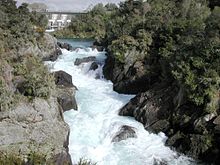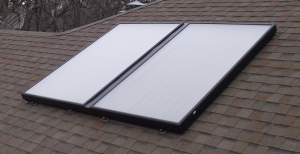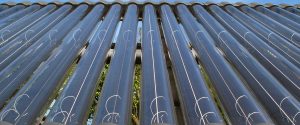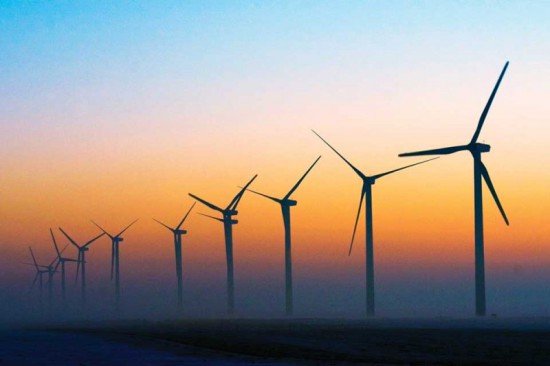(Copyright Ian Faulkner 2020)
This poorly researched film suggested that reliance on solar & renewable energy is impossible. This is nonsense.
When I lived in the North Island of New Zealand 47 years ago it already was almost 100% reliant on renewable energy. I quit watching the film after 30 minutes.
The film had clearly lost touch with reality at this point. The following article will explain why. For the average reader there is no reason to read the technical details of my review below. Just look up New Zealand on Wikipedia and you will see why I quit wasting my time watching the rest of the film! Even better look up “Renewable Energy”!
I worked in solar energy at the National Research Council (NRC) of Canada instrumenting both solar thermal and solar voltaic research in 1985 or so. I am competent to refute the technical details of the film’s discussion of renewable energy technology.
Another reviewer with expertise in other fields will have to spend the time reviewing the rest of the film. Michael Moore’s focus on the negative was too much for me! He really lost touch with reality.
To make it seem scientific the film interviewed carefully selected scientists who had a negative view of renewable energy. I found the film disturbingly negative and wondered if in fact it was an “infomercial” for the oil and gas industry.
For the average reader this is probably enough information to absorb! This film is not worth wasting your time watching!
*** Optional Technical Review ***
For the technical reader who is especially interested in renewable energy I offer the following in depth study of the films technical flaws in the renewable energy discussion.
The film carefully avoids discussing any of the many successful alternative energy technologies because the focus is on the importance of fossil fuels. Michael Moore carefully avoided discussing solar thermal technologies in his film. It makes one wonder who funded the film?
Solar thermal technology is the process of simply extracting heat directly from the sun. It is very efficient, ranging from 30 to 80% and functions reasonably well even on a cloudy day. It is used to generate hot water usually and the hot water can be used to heat buildings or simply to generate hot water. Solar thermal dates back to the time before the Christian era and has always worked well.
I did most of my energy research in Ottawa Ontario around 1985. I remember one winter day it was minus 30 degrees C. Our solar collector was designed to heat water and could function at these temperatures. It was a sunny day and I was measuring the hot water output with an electronic thermometer. It was turning out 90 degree C water at a fast rate. A truck driver was watching my experiment and he could see it steaming. He joked that of course everyone knew it would not produce really hot water and it was just the cold that made it seem steamy. Before I could stop him he put his hand under the flow of water. We had to treat him for serious burns … he never tried it again. Solar thermal is extremely effective and has been extremely efficient since the 1970s. It has been reasonably efficient in fact for thousands of years. It is often used to substitute for fossil fuel or wood heating.
The film attacks the solar voltaic industries that generate electricity from the sun. The movie claims that solar panels require the use of fossil fuels to create the panels. It further claims that the output of the solar panel will never equal the energy that went into their production. The producers information is out of date in several ways. This was true in 1970. Modern solar panels however are so efficient that the energy produced by the panels over just a few years does easily exceed the energy used for their production.
The film also suggests that fossil fuels are essential for solar panel creation. It is true that natural gas plants are often used to fire the ovens which are used to create solar cells. It is possible however to create the solar cells by using heat from any source. Solar thermal furnaces in desert areas are sometimes used to create very pure silicon ingots. Hydro electric power can also be used. Michael Moore is incorrect in assuming that you need fossil fuels for solar panel production. Natural gas is simply the cheapest way right now to generate the heat for the production of solar panels. Hydro electric power is a common renewable source of intense heat for industries that could be used.
At one point in the film coal is shown beside quartz and the suggestion is made that coal and quartz are required to make solar panels. Only quartz is required and a few other elements which are not derived from coal. A Scientific American article by By David Biello on August 13, 2008 makes this clear.
The suggestion is made in the film that solar panels have a short lifespan. This is simply false. Modern solar panels used in residential installations in America in 2020 all have a minimum guaranteed life of 25 years and many premium solar panels are now guaranteed to last for 30 years. However, this is only warranty life and there is every chance actual panel life may be as high as 40-60 years. Southern california still has fully functional solar electric installations from the early 1980’s.
The film even suggests that the cost of power for electric cars is huge. Anyone who owns an electric car knows that it hardly increases their electric bill at all to charge their electric vehicle. Some electric car owners in Victoria BC charge their cars with a blend of hydro and solar panels on the roof of their house.
The movie spends a lot of time suggesting that the need for batteries makes the use of solar power impossible to bring reliable renewable power to cities. That criticism is misplaced however because there are multiple ways to store electricity for city use besides batteries.
Excess electricity collected during sunny days can be used to pump water up a mountain to a reservoir. Later that energy can run downhill to drive a generator for hydroelectric power. When I lived in New Zealand in 1974 this was how the power was stored from geothermal plants.
Michael Moore states repeatedly that complete reliance on renewable energy is completly impossible! I know from experiences 47 years ago in New Zealand that complete reliance on renewable energy was how power was generated on the North Island where I lived! New Zealand did not have oil, gas or coal at the time I lived there.
EDUCATION BY POWER FAILURE
New Zealand offers a refreshing view on how successful renewable energy can be. It also demonstrates how significantly careful conservation can be triggered by running out of electricity!
When I first arrived in the summer of 1973 the electricity came from a hydroelectric project based on the water in Lake Taupo. They measure the water levels daily and know how low it can be each day if the power is going to last all year.
The year I arrived they were starting to run out of hydro and on a Friday night I was downtown when suddenly all the power failed. I was walking downtown and it happened. I went into a store to see what was going on and the storekeeper was lighting candles. He explained that they simply ran out of power on the island. Everyone headed home.
The next morning when power was back the radio explained that we had used too much power and we had to conserve power so they did not have to shut it down.
I was astounded at first but there was an amazingly good outcome! Everyone learned to conserve.
The government sent out large thermos jugs so that everyone could heat their water in the morning and at supper time to make tea. Hot water from kettles was poured into these large thermoses. Everyone drank tea and the thermoses were also used to keep soup warm. Triple insulation was added to hot water tanks. Every conceivable conservation method was used such that within a month there was no need to turn off the power. Meanwhile renewable energy geothermal plants were being constructed up and down the North Island where I lived. I lived there for a year and never again was there a power failure. Also significantly they never used batteries for storing energy. They used any excess energy to pump water back up into Lake Taupo so it could come down later as stored hydro electric power.
In North America we make the mistake of always having an excess of power. We panic that we might run out of power! Actually its better to run out of power because it helps to educate the population to conserve power!
Amazingly its now been 46 years since I have lived on the North Island of New Zealand. Apparently they have never again run out of power and in the last four years they have used a little less power each year because once again they are running out of power and learning to use less power. They have not run out because they build more geothermal plants every few decades. Conservation has become a common habit of the people of New Zealand.
The North Island runs completely on renewable energy. The South Island has to rely on some fossil fuels that they import. All of New Zealand, both North and South Islands are 82% reliant on renewables in 2020. They use a mixture of wind, geothermal, solar thermal, solar voltaic and hyrdroelectric for their renewables.
Michael Moore stresses how important batteries are for city electric power storage if you depend of renewables. He discussed the toxicity of batteries and other disadvantages of batteries. He does not even mention pumping water up to a mountaintop lake as a way of storing power. This is an old technology which has been used for over a century worldwide in hyroelectric systems. There are many ways to store energy and batteries are only one method. The implication is that without batteries solar is useless. This movie is very poorly researched.
The movie makes fun of wind energy and suggests that forests need to be cut down to build wind farms. That is such a poor example. Just look up wind farms of the world. The best farms are in areas of deserts or even out in the ocean. But Michael Moore’s goal is to put down every source of energy except oil and gas! Its an embarassing marketing film for Big Oil. Did these industries fund his film?
In summary I have many experiences of working in solar energy industries and in government research on renewable energy that give me a totally positive view of alternative energy sources. My experiences of living in New Zealand showed that renewable energies are both possible and practical.
Michael Moore’s film is more like a poorly researched essay where you say whatever you like and if you need research you keep looking until you find one example or a negative thinking scientist to support your argument.
When I worked for the Canadian government my first boss did not believe in renewable energy but it was his job to do the research. I was a constant source of annoyance for my boss when I had success in my experiments. He would have been a choice scientist for Michael to interview.
One can always find negative thinking scientists if you look carefully! Eventually I asked for a new boss down the hall who was a prize winning researcher in solar voltaic. It was a fun year of research until Brian Mulrooney of the Conservative Party of Canada permanently dissolved the NRC Division of Energy. Canada was in the lead of research on solar voltaic technology. Within a year all of our great Canadian scientists specializing in solar technogies moved to Japan. A year later Japan was in the lead.
The goal of the movie seems to be to discredit renewable energy. Who funded that film and can we “Follow the Money”? As I watched it I wondered if “Planet of Humans” was funded by the oil and gas industries?
The film covers much more than just renewable energy but that was enough for me. My partner Barbara and I both recognized it as a propaganda film and we shut it off at that point.
I invite researchers in other fields to skip past the nenewable energy section and critique the other topics of the film.
I would not recommend the film to anyone. It is strongly biased towards supporting the oil and gas industries.
PICTURES BELOW:
On a more positive note, shown below is the river that generates renewable energy in New Zealand. Shown also are the amazing geothermal plants that dot the landscape in New Zealand. Also shown are solar thermal and solar voltaic panels of various designs and wind turbines. All of these technologies work well.



